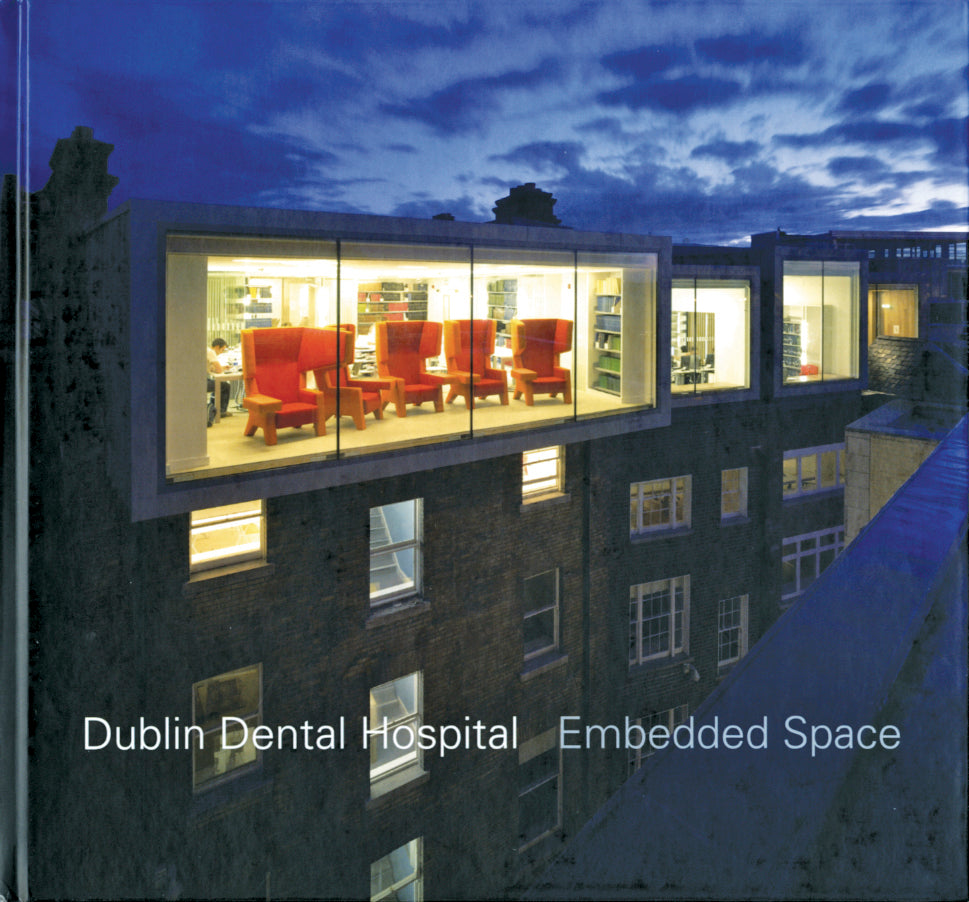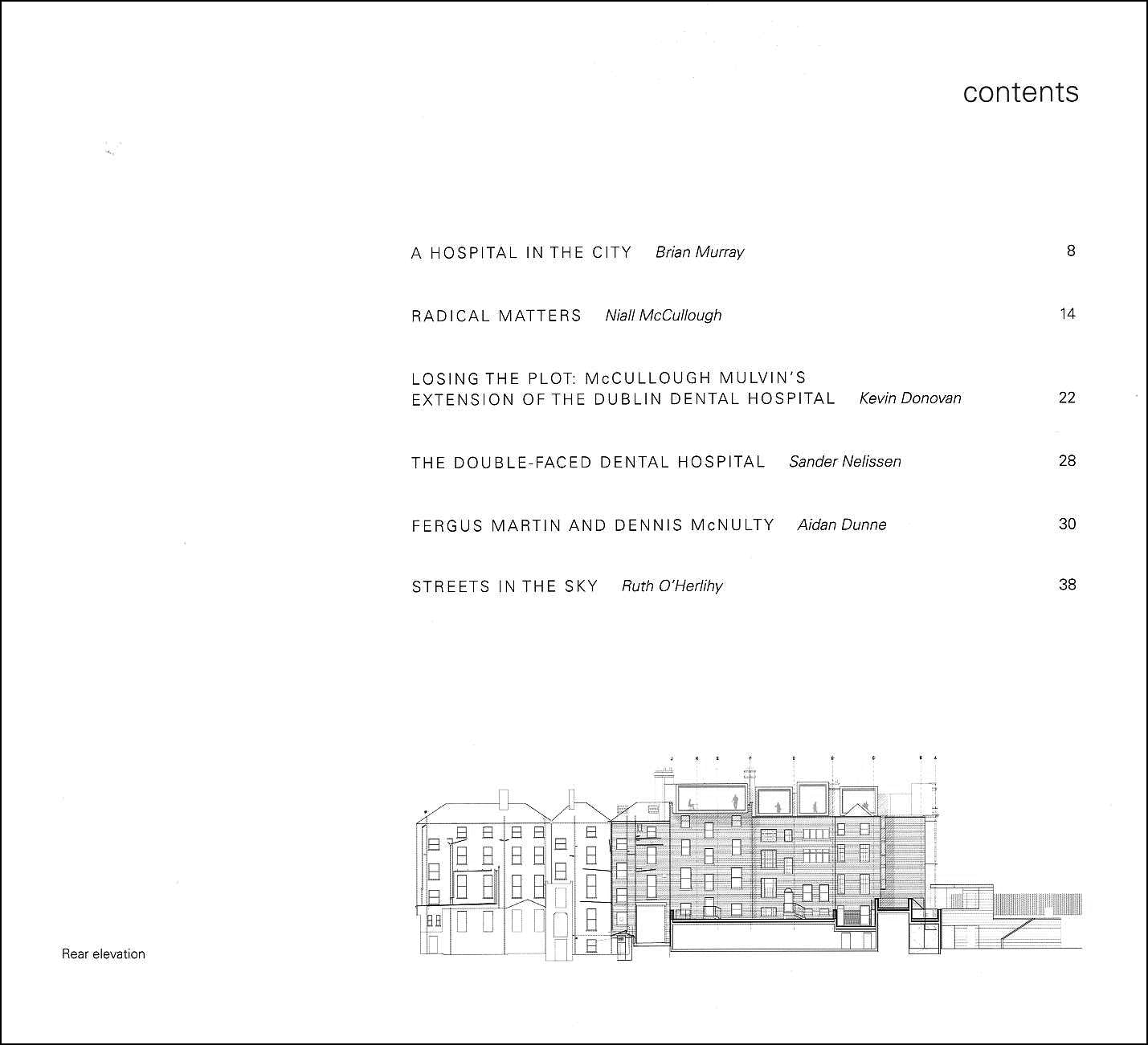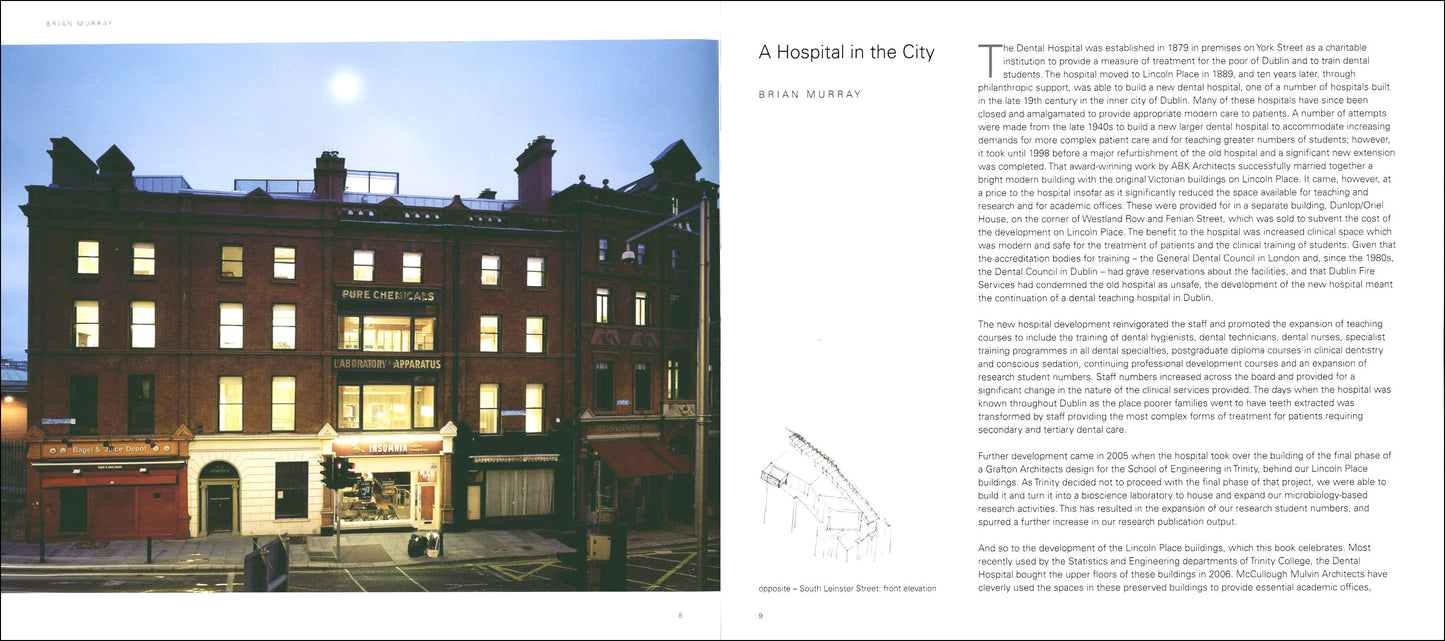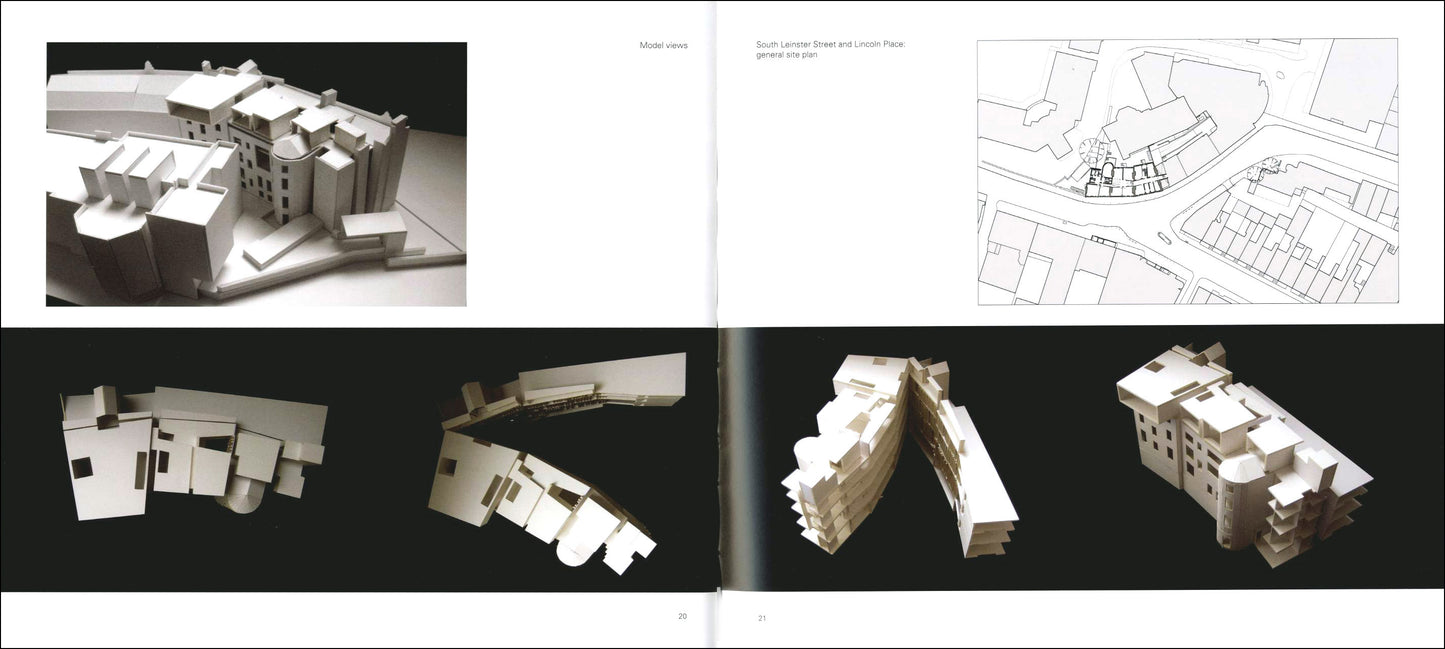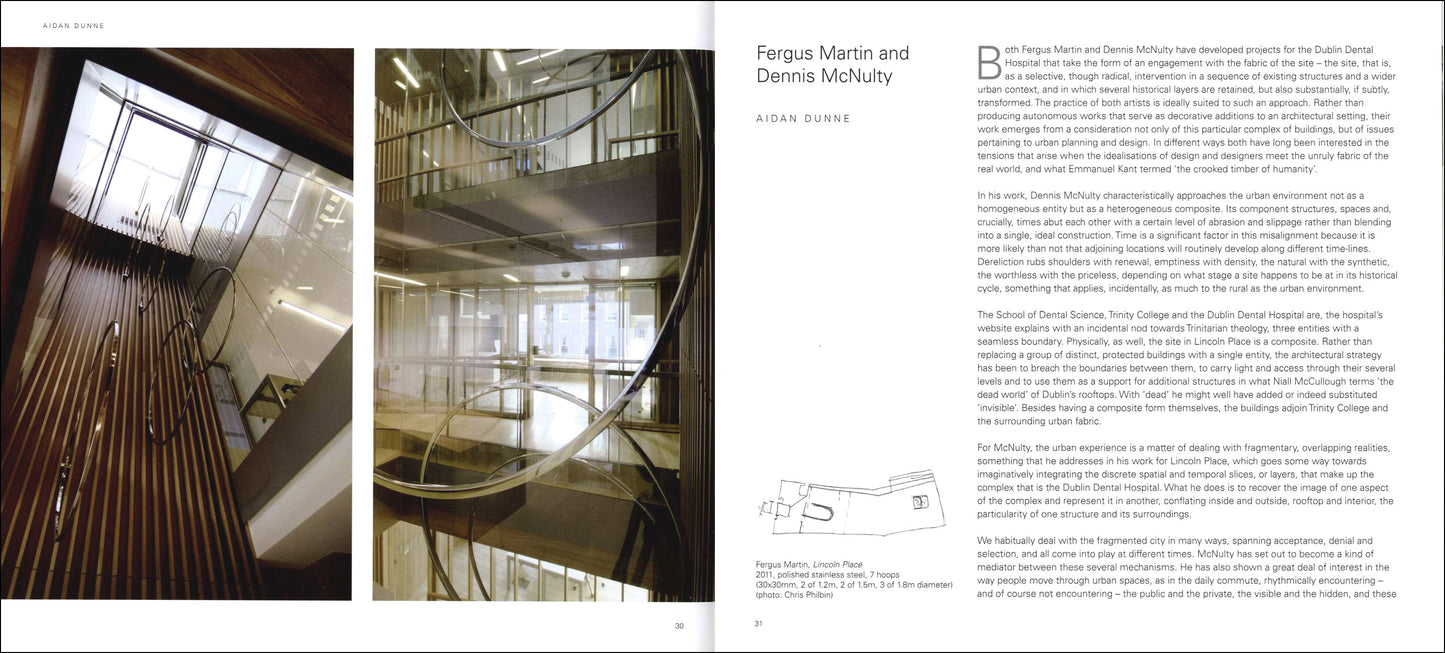Gandon
McCullough Mulvin Architects – DUBLIN DENTAL HOSPITAL: Embedded Space
McCullough Mulvin Architects – DUBLIN DENTAL HOSPITAL: Embedded Space
Couldn't load pickup availability
Share
ed. John O'Regan, Niall McCullough, Valerie Mulvin
ISBN 978 0948037 863 48pp (hardback) 22.5x24.5cm 87 illus (incl 61 col)
This monograph documents the building of McCullough Mulvin Architects’ rooftop extension to the Dublin Dental Hospital. Three levels of intervention, spliced into a pre-defined solid existing matrix, provide the Dental Hospital with extended space on its city-centre site. The hospital acquired five protected structures in Lincoln Place to expand into. Rather than looking to alternative locations, they pursued a sustainable model of working with the adjacent possibilities, connecting through from the current hospital to make new spaces. Embedded in the fabric and overlooking the street below, the rooms were to be used by the academic staff as offices and by students for seminar space, the culmination of their journey in the library transplanted to a new fourth floor that sits among the chimneys, taking stock of the Trinity campus and the city beyond.
EXTRACTS
In the Dental Hospital, the rooms were suspended above the shops below, a floating network of spaces over the city, something glimpsed across the street and through windows, reputed, not expressed – a delicate sense of how cities might endure. Like all work in existing buildings, there is the search for the right weight of intervention, a judgement on how the building might be left to breathe, and acquire additional meaning, through a lens of new construction, not least bringing better light, ventilation and circulation to old rooms, turning closed private spaces into linked communal ones. In detail, this microsurgery involved a series of investigations – linked, not linked, linked in circuitous ways depending on the reality of the building structure – the careful conservation of materials and finishes, the opening of three levels of corridor across the spine walls (a promenade of levels and steps like a Corbusian street in the air, its size matching the pavement below, architecture extended by the curve and fold of the street), then five metal pods on the roof for a linked library which uses the geometry of spine walls to support their forms, architects free to decide on height and extent of overhang, then a series of lightwells between both that give light to the spaces and appear (light as structure) to keep the pods aloft. The Dental Hospital is small, but effective work can be intimate in scale, and a city can be an aggregate of independent ideas. It is proposed at that level as a contribution to ways the city might be transformed.
— from the essay by Niall McCullough
The hidden aspect of McCullough Mulvin’s intervention within the existing framework, hardly visible from the street, suggests stealth, a ‘scheming’ as well as a scheme, a ‘plot’ in the sense of the second of the three meanings given above. One purpose of this plot might be to challenge established ideas of building use and conservation. The immersion of the new work in the older fabric recognises two complementary values of the original architecture. On the one hand is the part played by façades in the scenography of the city; from McKenny’s Bridge at Lower Mount Street, the bright brick of Finn’s Hotel still signals a fixed point of transition, first from suburb to town and, later, town to gown. Thus, the value at the urban scale of conserving the façade is clear. On the other hand we have the special ordinariness of the interiors, not so precious as to be unable to withstand a contrary occupation. These good, plain rooms are workaday, and if the work becomes different they are strong enough to change with it. Thus, the conservation project is not so much about fabric as the evolving life of the building. Despite the allegorical character of the traces of original levels and elements, they are not romantic but part of the useful character of the spaces.
— from the essay by Kevin Donovan
|
CONTENTS A Hospital in the City Brian Murray 8 Radical Matters Niall McCullough 14 Losing the Plot: McCullough Mulvin’s extension of the Dublin Dental Hospital Kevin Donovan 22 The double-faced Dental Hospital Sander Nelissen 28 Fergus Martin and Dennis McNulty Aidan Dunne 30 Streets in the Sky Ruth O’Herlihy 38 |
